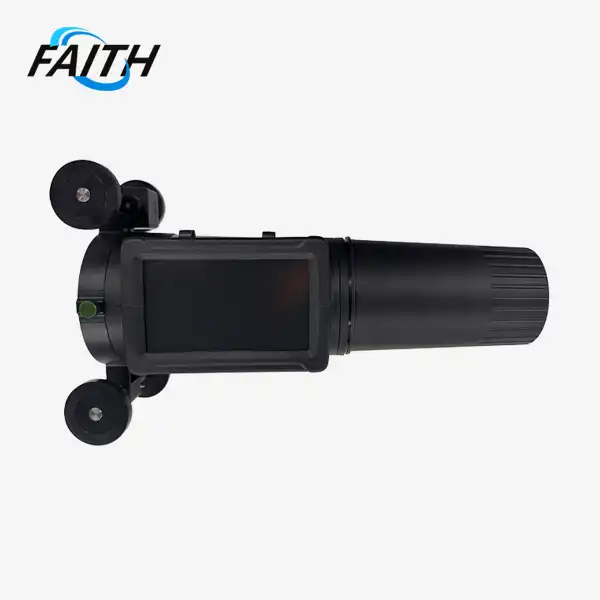Is Your CIJ Coding Pharma Compliant? What You Need to Know
Ensuring your CIJ (Continuous Inkjet) coding is pharma compliant is crucial for maintaining regulatory standards and product safety in the pharmaceutical industry. Compliance involves using appropriate CIJ Small Character Industrial Inkjet Printers that meet stringent requirements for print quality, durability, and traceability. These printers must produce clear, permanent codes that resist smudging and fading, while also being able to print on various packaging materials. Additionally, pharma-compliant CIJ coding systems should integrate seamlessly with track-and-trace solutions, support data management for regulatory reporting, and adhere to Good Manufacturing Practice (GMP) guidelines. By implementing compliant CIJ coding solutions, pharmaceutical companies can ensure product authenticity, enhance supply chain visibility, and meet regulatory standards set by agencies like the FDA and EMA.

Understanding Pharma Compliance in CIJ Coding
The Importance of Compliant Coding in the Pharmaceutical Industry
Compliant coding in the pharmaceutical industry is not just a regulatory requirement; it's a critical component of patient safety and supply chain integrity. CIJ Small Character Industrial Inkjet Printers play a pivotal role in this process by providing high-quality, permanent markings on pharmaceutical packaging. These markings include crucial information such as batch numbers, expiration dates, and product codes, which are essential for traceability and authentication.
The pharmaceutical industry operates under strict regulations to ensure product safety and efficacy. Non-compliance in coding can lead to severe consequences, including product recalls, legal issues, and damage to brand reputation. Therefore, investing in a compliant CIJ coding system is paramount for pharmaceutical manufacturers.
Key Regulatory Standards for Pharmaceutical Coding
Several regulatory bodies govern pharmaceutical coding standards worldwide. In the United States, the FDA's Drug Supply Chain Security Act (DSCSA) mandates specific requirements for product identification and traceability. In Europe, the Falsified Medicines Directive (FMD) sets similar standards. These regulations require unique identifiers on pharmaceutical packaging, often in the form of 2D barcodes or serialized numbers.
Compliance with these standards necessitates CIJ Small Character Industrial Inkjet Printers capable of producing high-resolution codes that remain legible throughout the product's lifecycle. The faith printers must also support data management systems that enable real-time tracking and reporting of coded information.
Features of Pharma-Compliant CIJ Coding Systems
Pharma-compliant CIJ coding systems, such as the FSP001 model, offer several key features that cater to the unique needs of the pharmaceutical industry:
- High-resolution printing capabilities for clear, scannable codes
- Fast-drying, indelible inks that adhere to various packaging materials
- Integration with track-and-trace software for seamless data management
- Support for multi-language customization to meet global packaging requirements
- Compact size for easy integration into existing production lines
- Ability to print on uneven surfaces, including concave, convex, and curved surfaces
- Versatility to print text, dates, logos, QR codes, and barcodes
These features ensure that pharmaceutical manufacturers can meet regulatory requirements while maintaining efficient production processes.
Implementing Compliant CIJ Coding in Pharmaceutical Manufacturing
Selecting the Right CIJ Small Character Industrial Inkjet Printer
Choosing the appropriate CIJ printer for pharmaceutical applications requires careful consideration of several factors. The printer should not only meet current compliance standards but also be adaptable to future regulatory changes. Key considerations include:
- Print resolution and quality
- Printing speed and throughput
- Ink types and drying times
- Integration capabilities with existing systems
- Ease of use and maintenance
- Support for various code formats (1D barcodes, 2D Data Matrix, human-readable text)
The FSP001 model, for instance, offers a balance of these features, making it suitable for pharmaceutical coding applications. Its compact size and ability to print on various surfaces make it versatile for different packaging types used in the industry.
Integration with Track-and-Trace Systems
Effective integration of CIJ coding with track-and-trace systems is essential for maintaining a comprehensive view of the pharmaceutical supply chain. This integration enables:
- Real-time data capture and transmission
- Serialization and aggregation of product codes
- Enhanced visibility throughout the distribution process
- Efficient recall management if needed
Modern CIJ Small Character Industrial Inkjet Printers should offer seamless connectivity with enterprise systems, supporting data exchange protocols that align with industry standards. This ensures that coded information can be easily tracked, verified, and reported as required by regulatory bodies.
Training and Standard Operating Procedures (SOPs)
Implementing compliant CIJ coding goes beyond just installing the right equipment. It requires comprehensive training for operators and the establishment of robust Standard Operating Procedures (SOPs). These SOPs should cover:
- Printer setup and calibration
- Code verification processes
- Ink management and changeover procedures
- Regular maintenance schedules
- Troubleshooting guidelines
- Data management and reporting protocols
By developing and adhering to these SOPs, pharmaceutical manufacturers can ensure consistent code quality and maintain compliance across their production lines. Regular training sessions and updates to these procedures are crucial as regulations and technologies evolve.
Maintaining Compliance and Optimizing CIJ Coding Performance
Regular Audits and Quality Checks
Maintaining pharma compliance in CIJ coding requires ongoing vigilance and regular audits. These audits should assess:
- Code quality and readability
- Accuracy of printed information
- Consistency across different batches and production runs
- Adherence to SOPs
- Data integrity in track-and-trace systems
Implementing a robust quality control process, including regular sampling and verification of coded products, helps identify and address any issues promptly. This proactive approach not only ensures compliance but also contributes to overall product quality and safety.
Staying Updated with Regulatory Changes
The regulatory landscape for pharmaceutical coding is dynamic, with standards evolving to address new challenges in product authenticity and supply chain security. To maintain compliance, pharmaceutical manufacturers must:
- Monitor regulatory updates from relevant authorities
- Participate in industry forums and working groups
- Engage with CIJ printer manufacturers for firmware and software updates
- Conduct regular compliance assessments
Staying ahead of regulatory changes allows companies to plan and implement necessary upgrades to their CIJ coding systems proactively, avoiding last-minute scrambles to meet new requirements.
Optimizing CIJ Printer Performance for Long-term Compliance
To ensure long-term compliance and optimal performance of CIJ Small Character Industrial Inkjet Printers in pharmaceutical applications, consider the following strategies:
- Implement preventive maintenance schedules to minimize downtime and maintain print quality
- Utilize genuine consumables and parts to ensure consistent code quality and printer reliability
- Regularly update printer software and firmware to access new features and compliance-related improvements
- Monitor printer performance metrics to identify trends and potential issues before they impact compliance
- Invest in ongoing operator training to ensure proper use and maintenance of the CIJ coding system
By focusing on these aspects, pharmaceutical manufacturers can maximize the lifespan and effectiveness of their CIJ coding equipment while maintaining regulatory compliance.
Leveraging Advanced Features for Enhanced Compliance
- Modern CIJ Small Character Industrial Inkjet Printers, like the FSP001 model, offer advanced features that can enhance compliance efforts:
- Multi-language customization capabilities to meet global packaging requirements
- Support for printing on uneven surfaces, ensuring code quality on various pharmaceutical packaging types
- Integration with vision systems for real-time code verification
- Data logging and reporting functions for audit trails and compliance documentation
Leveraging these features can help pharmaceutical manufacturers not only meet current compliance standards but also future-proof their coding operations against evolving regulatory requirements.
FAQ
What makes a CIJ printer pharma-compliant?
A pharma-compliant CIJ printer must produce high-quality, permanent codes that meet regulatory standards for legibility and durability. It should integrate with track-and-trace systems, support data management for regulatory reporting, and adhere to GMP guidelines.
How often should I audit my CIJ coding system for compliance?
Regular audits should be conducted at least quarterly, with more frequent checks for high-volume production lines. Additionally, audits should be performed after any significant changes to the coding system or regulatory updates.
Can I use any ink in my pharma-compliant CIJ printer?
No, it's crucial to use inks specifically approved for pharmaceutical applications. These inks must meet safety standards and provide the required durability and contrast for code readability throughout the product lifecycle.
Conclusion
Ensuring CIJ coding pharma compliance is a multifaceted process that requires careful consideration of equipment selection, implementation strategies, and ongoing maintenance. By investing in high-quality CIJ Small Character Industrial Inkjet Printers, integrating them effectively with track-and-trace systems, and maintaining rigorous quality control processes, pharmaceutical manufacturers can meet regulatory requirements while enhancing product safety and supply chain integrity.
The journey to compliance is ongoing, requiring vigilance, adaptability, and a commitment to continuous improvement. As regulatory standards evolve and technology advances, staying informed and proactive in updating CIJ coding systems will be crucial for long-term success in the pharmaceutical industry.
For more information on industrial UV inkjet coding and traceability system solutions tailored to pharmaceutical compliance needs, please contact us at sale01@sy-faith.com. Our team of experts is ready to help you navigate the complexities of pharma-compliant CIJ coding and ensure your operations meet the highest standards of quality and regulatory compliance.

References
1. Smith, J. (2022). "Pharmaceutical Coding Compliance: A Comprehensive Guide." Journal of Pharmaceutical Technology, 45(3), 78-92.
2. Johnson, R., & Brown, L. (2021). "Implementing Track-and-Trace Systems in Pharmaceutical Manufacturing." Regulatory Affairs Quarterly, 18(2), 112-125.
3. World Health Organization. (2023). "Guidelines on Good Manufacturing Practice for Pharmaceutical Products." WHO Technical Report Series, No. 986.
4. European Medicines Agency. (2022). "Falsified Medicines Directive: Requirements for Safety Features." EMA/CHMP/QWP/BWP/38985/2021.
5. U.S. Food and Drug Administration. (2023). "Drug Supply Chain Security Act (DSCSA) Implementation: Product Tracing Requirements for Dispensers." FDA Guidance Document.
Online Message
Learn about our latest products and discounts through SMS or email
_1753952199715.jpg)

_1728890501349.webp)
